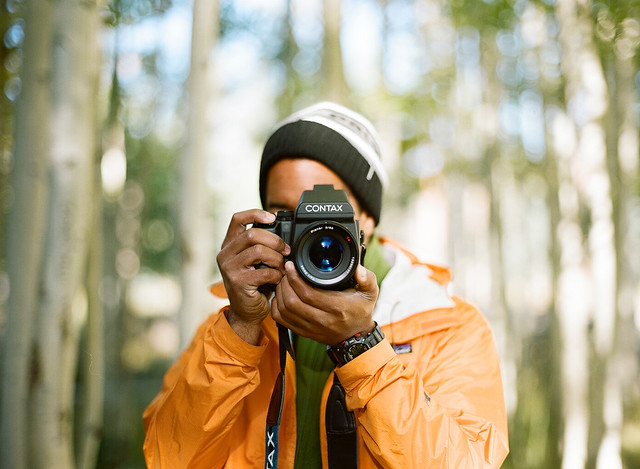I am a 22 year old college student that resides in South Florida. I love
all kind of art and reading and writing and biking and anything
beautiful I love being quiet and myself and I am a whisper kind of
person, somewhat shy of noise.
Since when do you do photography? I
started taking pictures back in the myspace days in 2005, where my
friends and I would do silly photo shoots with my point and shoot
camera. In 2008-09 I went through a really hard time where I was lonely,
and desperately needed an outlet for all the horrible emotions I was
feeling. I was at Costco, and bought photoshop on a whim, playing
around, doing horrible editing of wings, etc. (hah!) A few months later I
sold my clarinet of 9 years and bought a DSRL. I started a 365 project
in 2010, and now its just history.
Why do you do mostly film?In 2010 I bought a
Canon AE-1
off of EBAY on a whim and completely fell in love with film. I love the
permanence of it, and how you have one chance to capture a fleeting
moment. I love the grain and scratches and all the imperfections that
somehow mirror my life and thoughts.
What camera did you start with, and what cameras do you use now?My first DSLR was a
Sony A200 with the kit lens and a 50mm, but now I use a
Canon T2i. The lenses I have for my Canon are a 30mm f/1.4, a 50mm f/1.8, and a 24mm f/2.8.
My first film camera was an awful broken
Minolta. Now I use a
Canon AE-1 with a 50mm lens, a
Instax Wide, and various little thrift store cameras.
What makes you want to keep shooting?I
take so much joy in capturing the beauty around me. I love having
people seeing photos I’ve taken of them, and have them feel beautiful. I
love turning the ordinary into something extraordinary. I just love
creating and writing, and photography has jumped into my life and turned
into something I don’t think I can live without.
Do you have any tips for someone who’s just picking up a camera?Keep
shooting. Find photographers you love and become inspired. Take on a
project, whether a 52 week, a 365, or anything that will keep you going.
Even if you feel like you aren't improving, keep going because one day
you will wake up and be pleasantly surprised at how far you’ve come.




































